Discussion: The future that lies ahead in tissue preservation and its relationship with drone manufacturing industry
Sometimes not all dead tissues, organs, animals, etc. are buried and forgotten, some are actually used for different purposes provided they are well preserved. One of the main factors that determine the duration or how long a dead specimen lasts is the method used in preserving it. In humans for example, the process of preserving the dead body to prevent it from decaying or undergoing decomposition as a result of bacteria contamination or by autolytic enzymes (the enzymes in our body that degrade its own cells) is usually referred to as embalming.
The real essence of preservation
When human bodies are preserved through embalming, they are kept for different purpose, which could be for later use as a specimen for teaching or for forensic study and more, such specimen is referred to as cadaver. In clinical practice, this is also referred to as tissue fixation and the main essence of tissue fixation is to prevent the two most important postmortem chemical reactions such as autolysis – break down of cells by its own enzymes and putrefaction – bacterial decomposition of a tissue cell. These two chemical reactions are the major reactions that occur when a tissue is dead.
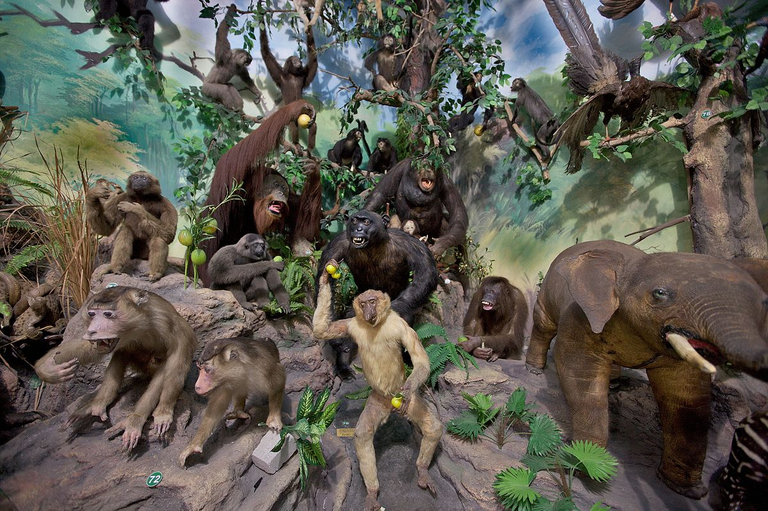
A random selection of taxidermy from a primate section of the Rahmat International Wildlife Museum and Gallery in Medan, North Sumatra, Sumatra, Indonesia
Arresting these two most important reactions will keep any tissue in a life like manner for years. Preserving dead tissues or full organism is just not enough, there is always a purpose behind them as I have said earlier. You either decide to preserve a whole dead specimen or just its tissues. Usually it is easier and less complicated to preserve dead organisms that do not have complex body system and also smaller animals like spiders, Insects, lizards, etc. than preserving bigger animals and mammals like goat, chimpanzee, gorilla, humans.
Most dead bodies today are preserved by injecting formalin into various parts of the body. This is still in practice, especially in developing nations and even in the hospital I worked, we still use formalin to fix dead tissues. This technique is however phasing out because of the inherent dangers associated with the chemical - formalin. One of its well known effect is its suffocating effect.
When you get exposed to this chemical directly, it causes cessation of breath, more like, it chokes your breathe. Its effect is well seen in experiment animals, for example guinea pigs and rats. You can simply knock a rat into unconsciousness by exposing it to formalin. This was the common technique we used way back in high school. However, this method have been shown to have effect on biochemical parameters in the animal.
How we carry out euthanasia in experimental animals
In most animals that are killed or knocked into unconsciousness, you end up noticing an elevation in stress factors and also mild tissue deformation. This is as a result of tissue deformation resulting from low oxygen tension created by the presence of the formalin. The unconscious state of the rat, allows you to do your experiment and organ harvesting for possible histological analysis.
So if you are doing an experiment that has to do with the examination of the rat tissues and biomarkers of oxidative stress, you will end up getting a false picture of the rat's tissues and also false elevation biomarkers of oxidative stress. For this reason, the most method used is cervical dislocation (separation of the cervical vertebrae in the animal between C1 to the T1 vertebrae by holding applying pressure on the neck and tail of the animal followed by a rapid pull in opposite direction)

Laboratory mouse
This is mostly the method I personally use in most of my research studies involving rats that weigh <200g. There is also a method known as Decapitation technique (separation of the the head of an animal from the rest of the body using a machine called guillotine with a very sharp blade). Even though this method is also fast, it however could introduce contamination in the animal especially if the blade is somewhat contaminated.
It is always better to collect the blood from the animal first before carrying out all these procedures. Best point through which you can collect blood is from the eyes, through the retroorbital plexus (rats) or sinus (mice). You do this mainly if the volume of blood you want for biochemical analysis will be large. Alright let's come back to our main discussion.
Where we are today on tissue preservation
One of the most advanced method of tissue preservation was founded by Professor Gunther while carrying out experiment with kidney slices and plastic polymers in his laboratory at the University of Heidelberg in Germany, he discovered that the water and fat content of the tissue could actually be replaced by diffusing the tissue with polymers that are curable (e.g Biodur S10) thus enabling this tissue to be preserved for years without it decaying.
Instead of using formalin, molten plastics are infused into the dead tissue while it is simultaneously exchanged for water and fluids from the tissue. This is done through negative pressure and at the end of the day, you have a well preserved dead tissue that is free from contaminations. You can read a detailed post the plastination process in this post - The science of plastination - a way of preserving tissues for centuries using a curable polymer (Biodur S10). It is an old post of mine, but you will sure not regret reading it.
The advent of Taxidermy as a preservative technique and drone incorporation
The purpose of specimen preservation has gone beyond mere display or artistic purpose. Today, they have good roles they play in the creation of prosthetics (artificial mimicry of natural missing part of the body). In fact, rather than loosing some parts of the body, they can be plastinated to serve as a prosthetic. When preservation is extended to animals, it is referred to as taxidermy
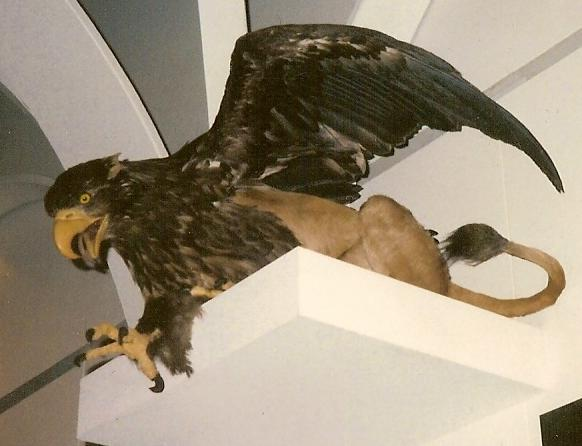
"Stuffed" gryphon, Zoological Museum, Copenhagen.
Taxidermy is the art because it is mainly recreative in nature and the sole aim just like other methods of tissue preservation, is to preserve a dead animal's body in a lifelike form. This is done in two main ways known as stuffing or mounting. Though it is not a new practice because it has long been done for years now, my attention was only drawn back to it after reading an innovation in technology that incorporated it.
As old as it is, till today, it is still being practiced just like how formalin is used. Though it does not compare to plastination in terms of cost, plastination is more costlier, hence probably one of the reasons it is still in use. All tissue fixation techniques will always have one thing in common - creation of a life-like representation of the specimen, object or animal under process.
Recently, there has been an impressive innovation involving the use of drones made from taxidermy (more specifically, drones that can fly like bird).
This is actually where it gets more interesting. I bumped into the scientific journal that reported the first trial of a drone made of taxidermy bird. Though their main intent was for wild life monitoring, which of course makes a whole lot of sense. The only fear is that, even after perfecting these drones, their are high chances that, the military industrial complex will exploit it for combats and enemy surveillance.
This paper looks into the use of taxidermy birds on flapping wing drones so that wildlife monitoring will be more seamless and natural. By using 3D flapping and aerodynamic simulators, limits of aerodynamic flapping characteristics could be set for the drone for a specific set of wings. This allowed the implementation of flapping mechanisms and testing of the aerodynamics of the flapping wing drone. It is discovered that although it is difficult to create such a drone, it is very practical for research purposes and can keep nature undisturbed
Drones are also known as unmanned aerial vehicles (UAVs), and since their invention, they have revolutionized the way we view the world. They access places that seem difficult for humans and mostly provide better arial view with ease. The days of using helicopter to take wide range images are actually over since the inception of the use of drones. You can practically use these drones for almost everything, from delivering packages to conducting military operations. I guess you are aware of how they have massively used in the ongoing war.
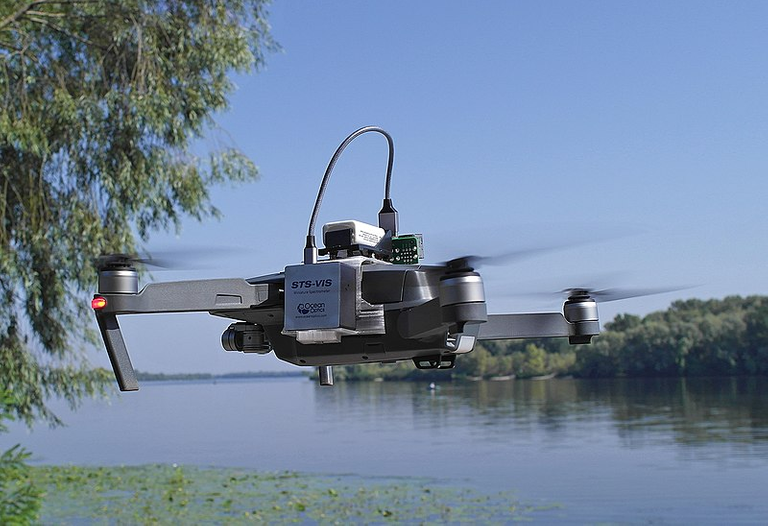
Quadrocopter DJI Mavic Pro additionally equipped with spectrophotometer Ocean Insight STS-VIS and supplementary equipment. Spectrophotometer captures surface refletance spectra in 350-800 range with 1 nm step. It is controlled by Arduino micro-computer and can be triggered remotely or work autonomously. The mount system was designed by Dr. Oleksandr Polishchuk during the project "Monitoring of anthropogenic pollution in freshwater bodies by remote sensing of water and aquatic vegetation" as a part of ERA-PLANET project funded by Horison 2020 framework program
Depending on their purpose, they are fitted with various features. Most of them have cameras, detectors, sensors, and other technologies that can be used collect data and perform various tasks. However, despite all this, they have some limitations and some which includes being large in size and in some, limited flight time. These small limitations and more, makes taxidermy drones relatively better.
However, my focus is on that recently designed. The uniqueness in this particular taxidermy drone designed by these scientists, is the creation of the flapping mechanism for flight. Aside this, well nothing then really makes it a new invention, considering the fact that, taxidermy drones have long been in existence before now.
So in essence, taxidermy drones that have flapping mechanism for flight will likely be more advantageous because they may not have to consume more energy, as well space. Shaping them in a bird will drastically reduce their size. This however again, will likely depend on their purpose. I don't see the possibility of a flapping drone carrying heavy ammunition.
In addition to the limitations of normal drones, another possible consideration is the fact that, drones lack the ability to blend in with the natural environment, and this is where for me, this lovely flapping taxidermy drone innovation comes in to fill the gap. Most drones can be very noisy, hence may not pass undetected.
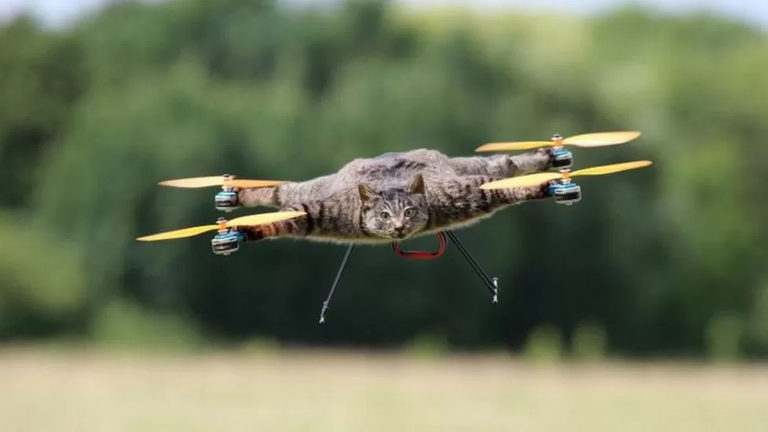
Bart Jansen, BBC
Generally, taxidermy drones can take on the appearance of a real animal, and will make it less noticeable to other animals and at the same time, allowing it to blend in with its surroundings. This will simply make them very difficult to be detected in wildlife by other animals, hence allowing hitch free wildlife photography at closer range. I think it would even be possible to use them to catch poachers, since it won't be easily seen.
Another potential use for taxidermy drones which I feel will be very useful is in hunting. Using these drones can for sure increase the chances of hunters because it will be very difficult for other animals to identify them, considering the fact that they blend in. This will in turn help the hunter get closer to their target animal without alerting of it and at the end increasing their chances of a successful hunt.
Well, even though they are promising, I think it is unfair to use them to gain advantage over animals, and this of course goes against the principle of fair chase. This will for sure erode the fun and the very essence of hunting as a game.
Though the experiment is still in its early testing and developmental stages, I believe gradual improvements will perfect it. So as you can see, there are a lot more beyond just tissue preservation. There is more to what preservation can offer only if we channel them in the right direction.
I only wonder what the future will look like going forward. Haha, imagine not being able to clearly differentiate between normal bird and a taxidermy. Though you might be able to spot the difference on close proximity, but at far, it might be very difficult. Either, keep watching to see how things unfold.
Nonetheless, taxidermy drones will offer great benefits especially the wild life monitoring. This is the major place I find its usefulness more ethical and welcomed. This is just my perspective and view about this new taxidermy flapping drone. Feel free to drop your view if any and let's discuss.
Alright, that will be all for today. See ya!
References
•The science of plastination: way of preserving tissues for centuries using a curable polymer biodur s10
•Cervical Dislocation
•Euthanasia of Adult Rodents by Physical Methods
•A review on wildlife taxidermy: preservation for conservation
•Stuffed dead birds made into drones could spy on animals or humans
•Taxidermy Birds as Platform for Flapping Wing Drones: A Bioinspired Mechanism for Wildlife Monitoring
•Researchers resurrect dead birds as drones, thanks to taxidermy
•Unmanned aerial vehicle (drones) in public health: A SWOT analysis
•Security analysis of drones systems: Attacks, limitations, and recommendations
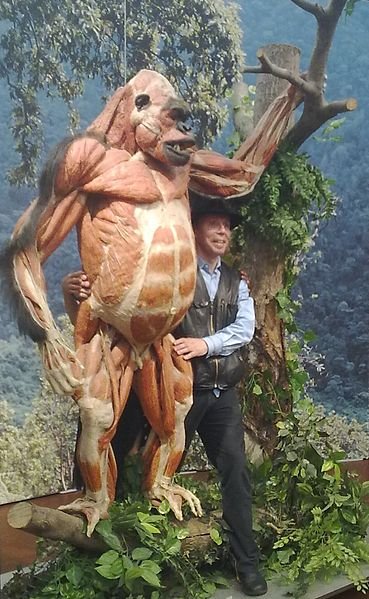
Thanks for your contribution to the STEMsocial community. Feel free to join us on discord to get to know the rest of us!
Please consider delegating to the @stemsocial account (85% of the curation rewards are returned).
Thanks for including @stemsocial as a beneficiary, which gives you stronger support.
Congratulations @cyprianj! You have completed the following achievement on the Hive blockchain And have been rewarded with New badge(s)
Your next target is to reach 70000 upvotes.
You can view your badges on your board and compare yourself to others in the Ranking
If you no longer want to receive notifications, reply to this comment with the word
STOPCheck out our last posts:
Support the HiveBuzz project. Vote for our proposal!
I still remember when I found out that the foreskin left over from circumcisions performed in the US is used to make perfumes. Humans are creative when it comes to not letting tissue go to waste!
haha, that was quite a read. However, I felt irritated with the use of the foreskin for perfumes. I feel it raises ethical concern.
Indeed, we are naturally creative.
The first time I entered the morgue, the suffocation was intense. I just wish there would be a better chemical for preserving tissues for a long time. Formalin is too harsh on our health and I just wish it doesn't have any side effects on our health. Thank you for telling us about other preservation methods although you said they're expensive but just wish they can adopt it. Thank you once again.
cryopreservation could work, but still not pocket friendly, especially in developing nations with epileptic power supply. I guess the status quo will remain until thigs change.
That's just the issue. It's expensive and people cannot afford it. I just wish there would come a time when all this things will be in place.